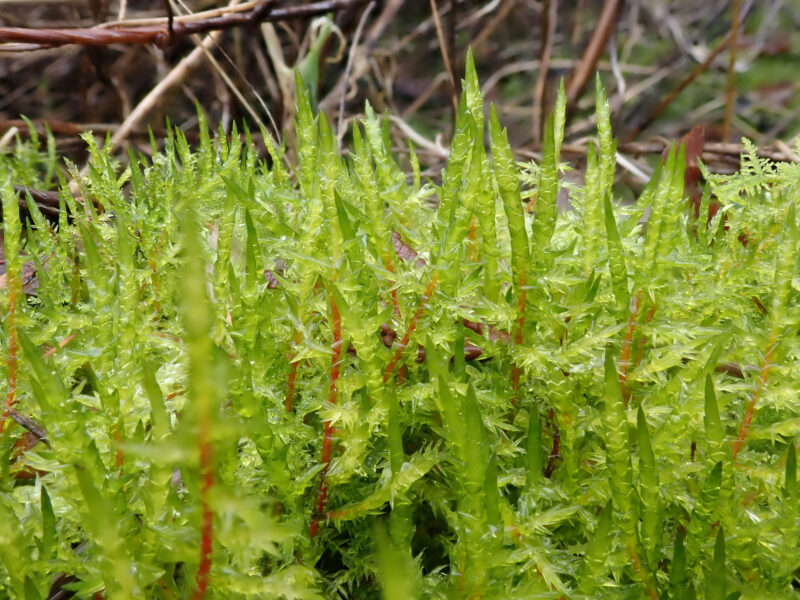Identification notes
In open, basic habitats, Calliergonella cuspidata is almost as ubiquitous as Brachythecium rutabulum and Kindbergia praelonga. Its tastes are remarkably catholic and while is is most often encountered in well-drained grassy places, such as lawns and downland, it is equally at home in wet places, including shallow pools in disused limestone quarries, marshes and fens. The one thing that its habitats have in common is they are base-rich and relatively enriched. Its colour can be quite variable too; it often has a reddish stem but this can be poorly developed in plants growing in semi-shade. Normally, plants are mid-green and glossy, but in strong sunlight, or stressed environments, they often become yellow-brown.
With its neat-looking pinnate shoots and sharply pointed shoot tips, C. cuspidata is one of the first plants that bryologists get to grips with when starting out. It is often found in the company of other robust mosses and can dominate pools and marshes if it is really happy. Unfortunately, more select species are rarely found in its company.
It appears to be intolerant of much shade and is not often found in woodland. In such habitats, plants that resemble Calliergonella cuspidata in size and habit should be checked for Cirriphyllum piliferum, a species which has ovate leaves contracted abruptly into a small but distinct hair-point.
Read the Field Guide account










